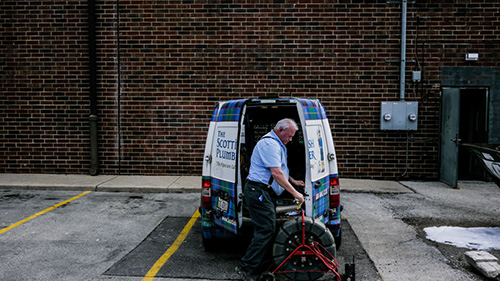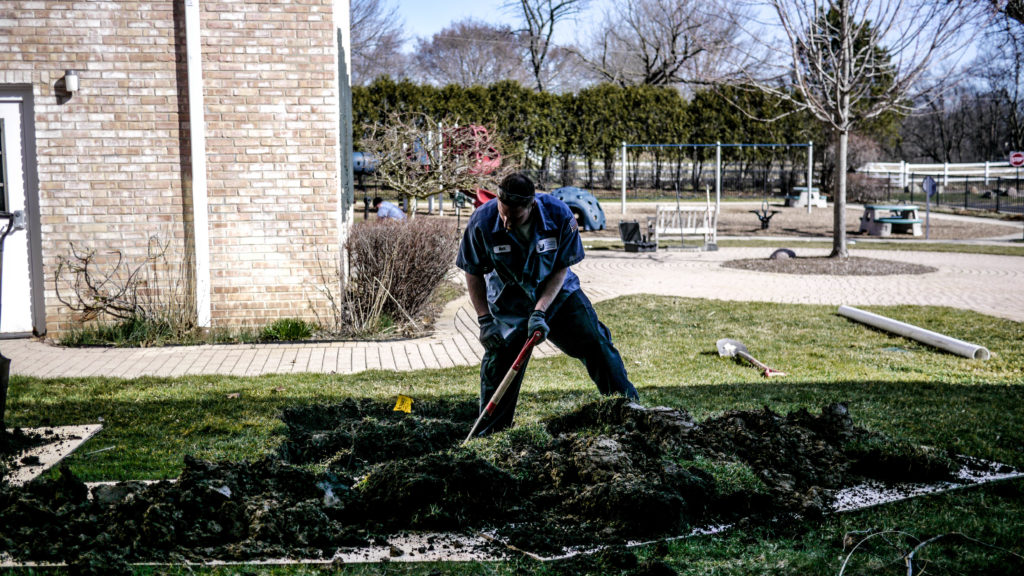1. Faucet aerators are blocked
A faucet aerator is the little strainer at the tip of most household faucets. Without an aerator, water flows out of the faucet as one large stream. An aerator spreads this stream into tiny droplets, helping to both save water and minimize splashing.
Aerators should be removed annually and checked for mineral deposits built up inside of the openings. You should be able to get these deposits off with just water and a brush, but if you can’t, soaking in vinegar should do the trick.
Another common symptom of a clogged aerator is an irregular spray pattern or a stray stream of water going off at an odd direction. If you see this happening, it’s time for a cleaning.
2. Valves not open all the way
Occasionally, one of the valves controlling the water supply to your home gets stuck in a slightly closed position and restricts the flow. This usually happens either at the meter valve or at the main valve. The meter valve is found in the meter box, while the main valve is located near the outside hose faucet. Make sure both are in the open position by turning in a counterclockwise direction.
Be careful when dealing with older valves. They may be brittle and have the potential to break. Old gate valves, which tend to get stuck or break at the most inopportune times, should be replaced with ball valves, which are much more reliable over time, and much easier to use.
3. Your old pipes are made of galvanized steel
Calcium and other mineral deposits love galvanized steel. So much, in fact, that they often stay behind, making a home inside of your pipes. Over time, the inside diameter of the pipe is reduced to a point where the water flow becomes restricted.
There is no easy solution. Once a pipe becomes blocked with sediment, the only way to repair the problem is to replace the pipe.
4. There is a hidden leak
A leak at any point in your water supply system can result in low pressure. If the leak is not visible, there is a way to check.
First, shut off all the faucets inside and outside of your home. Check the meter reading and write it down. Wait several hours, and check the meter again. If there is an increase in water usage, you probably have a leak.
At this point, you should call a plumber. An unattended leak can not only increase your water bill, it can also wreak havoc on your walls, ceilings, and floors.
5. Municipal water pressure is inadequate.
The water supply for many towns in the Chicago area is dependent on century-old infrastructure. So, while the ideal water pressure for the average home is between 40 and 60 psi, many municipalities deliver substantially less than that.
If the municipal pressure coming into your home is inadequate, the problem can be resolved by installing a booster pump. But first, you must make sure that this is what’s causing the problem. The Scottish Plumber can test the water pressure coming into your home using a special pressure gauge and tell you whether a booster pump is a good solution for your specific problem.
If you need help with any water pressure issue, call The Scottish Plumber at 888-622-2564, or visit our website at www.scottishplumber.com.


